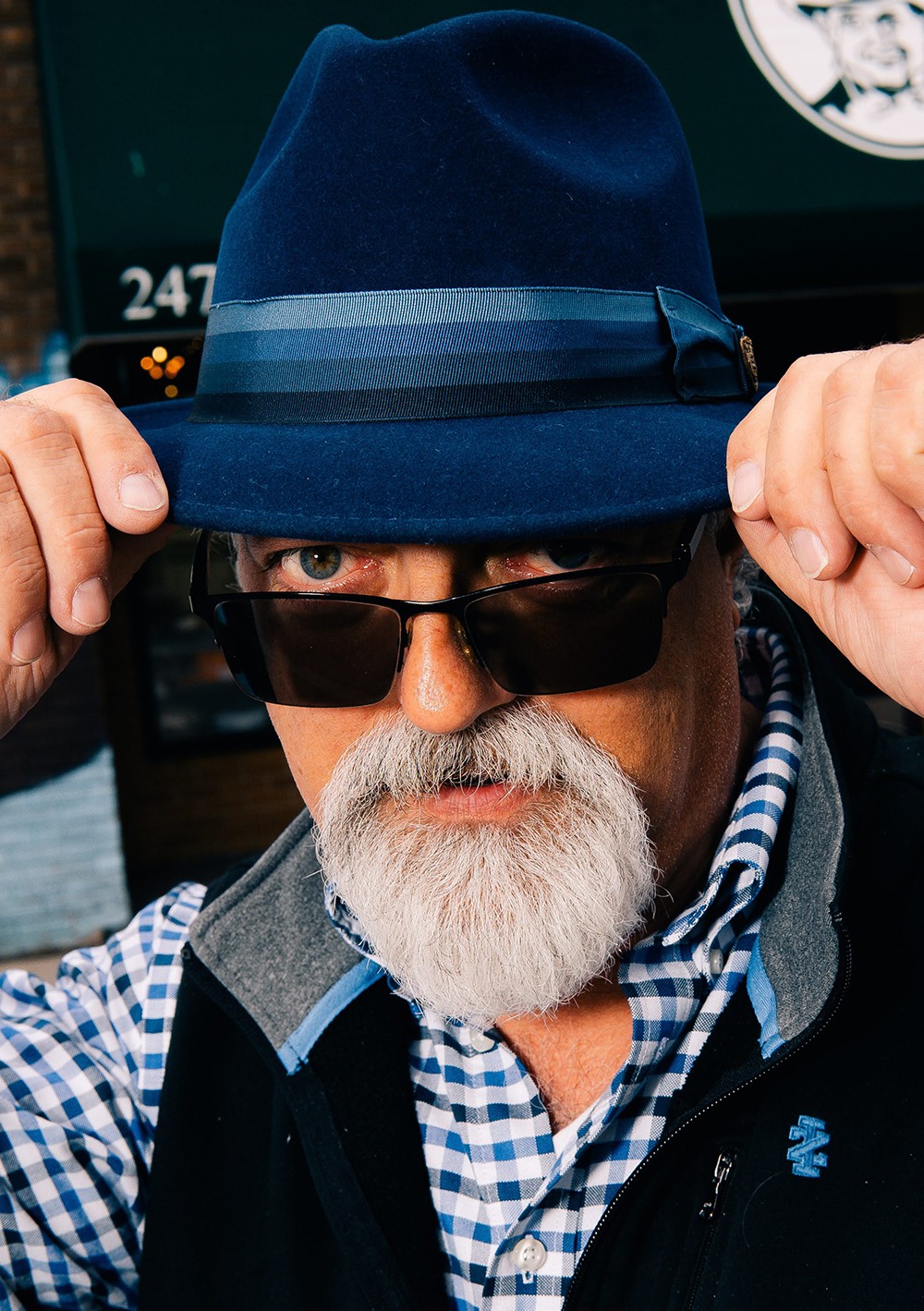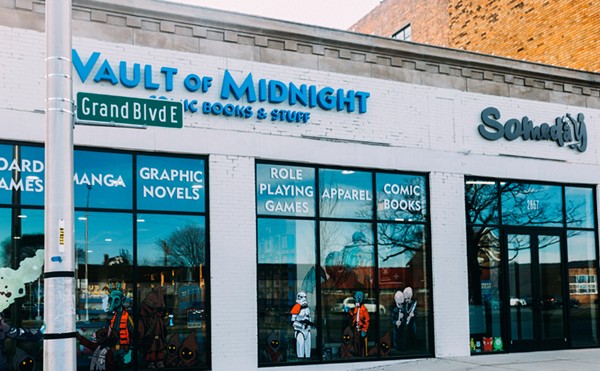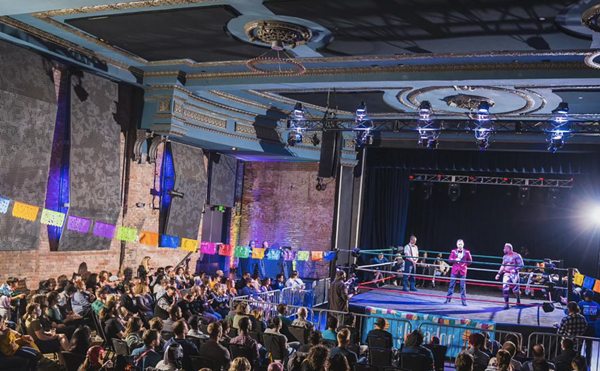
Joe Renkiewicz wears many hats. His first hat, a gift from his father, remains sacred. It appeared on a bright Easter Sunday in Hamtramck, 1966. He was 4 years old, forever changed.
“The hat was navy blue, what was called a ‘hanky panky’ at the time,” Renkiewicz recalls, eyes crinkling at the memory. “I’ve pretty much worn ‘em ever since.”
We’re surrounded by hats at Henry the Hatter’s 1,700-square-foot Eastern market location — a silent audience resplendent in every shade of wool, felt, and straw. The business — which includes a sister Southfield branch — turns 130 this year, making Henry the Hatter the oldest hat retailer in the nation. Each month in 2023, the shop will offer a new sales promotion to celebrate.
Detroit’s famous hat shop moved into Eastern Market about five years ago, after 65 years at 1307 Broadway Street. Renkiewicz motions to the custom midcentury display cases gleaming against scarred red brick, remnants of the old downtown digs. Originally a meat packing plant — and later, a pet supply store — the latest Hatter HQ has already amassed a healthy patina.
“We’re lucky the shelves fit in here,” he says. “When we first walked through this location, there was a hole in the floor with a steel plate over it. They used to bring the livestock in, gut ‘em, and it would all flush straight to the river.”
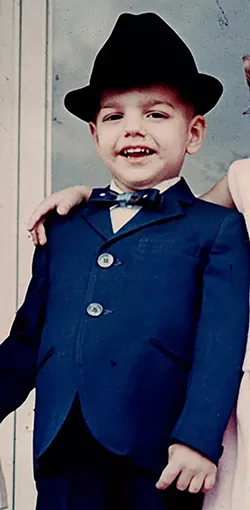
Holding court in the showroom, Renkiewicz presents an unusual history lesson. In 2010, the building owner purchased a heap of rubble: No roof — just open sky, he says. And then there were the freezers.
“After everything crumbled, they finally opened up the freezers and there were cats and worms for dissection; it was storage for a nursing school,” says Renkiewicz, gray eyebrows wiggling.
These days, you’ll catch a whiff of barbecued ribs on the breeze and folks stroll by with bags of fresh fruits and vegetables procured from nearby farmer’s market sheds. But that doesn’t keep Renkiewicz from recounting the grisly details. Like most Detroit natives, he’s proud of the gnarled past. A century-old advertisement hangs in the shop encouraging Free Press readers to “bring in panama hats now!” to be cleaned courtesy of “Detroit’s Exclusive Hatter.” The telephone number of that 49 Gratiot Ave location? 970.
“Henry the Hatter has weathered every war, depression, recession, and riot in 130 years, including two pandemics,” Renkiewicz likes to remind folks. His wife and office manager Kathleen Renkiewicz proves this point beautifully. She shows me a dusty first aid kit found at the Broadway location with a decades-old N95 face mask tucked inside — a reminder that hard times are eternal.
Thanks to government aid and a rush of worldwide support, the business weathered the latest global calamity with gusto. Only a few years into its new home at Eastern Market’s Riopelle Street, the world shut down. But Henry the Hatter received calls and emails from all over the country.
“Orders flooded in from everywhere,” Kathleen says. “There is so much pride for this place. Henry the Hatter really belongs to the city of Detroit.”
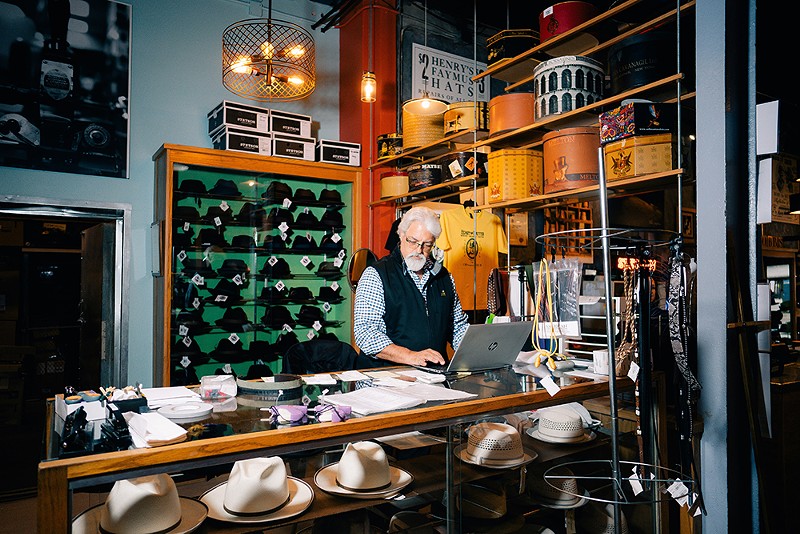
Men of the brim
It takes more than one hatter to keep a city well suited. Renkiewicz, who recently took full control of the business from longtime owner Paul Wasserman, does not take succession lightly. Most locals know that Dwight D. Eisenhower, Run DMC, LL Cool J, and Steve Harvey have all strolled into Henry the Hatter seeking a dash of confidence. Whether located downtown or tucked away in Eastern Market — “two blocks behind shed number 2,” Renkiewicz reminds old timers — Henry the Hatter continues to deal in bygone quality.
“That little pop of color — something as simple as a feather, the color of a band — it all matters,” the hatter says.
Nearly four decades in the hat business, Renkiewicz still finds this puzzle enticing: a jade hat band brings out blue eyes, a spray of ornamentation adds the right dash of flair. Bone structure and body build factor into whether a wide or thin brim is right.
Safe to assume the original Henry knew the alchemy of a good hat: As a young man, Henry the Hatter founder Henry Kromrofsky cut his teeth cleaning the long, cylindrical stove top hats all the range in the mid-19th century. Renkiewicz recounts what we know of Komrofsky’s ghost (there’s still a lot we don’t): He served on the city of Detroit School Board, was State of Michigan Boxing Commissioner, and played drums in the Detroit Masonic Temple band. Establishing his humble hat business in 1893, the late founder remains more myth than man, although Kathleen muses “he’s buried somewhere in Detroit.” One has to wonder, did Kromfosky attend his 1941 funeral in a bowler or classic pork pie?
More is known about Henry’s successor, junior sales associate Gustave Newman — and for good reason. Yellowed news clippings tell a story of American bootstrapping at its finest: The Jewish stock boy-turned-business partner proved his merit when taking over Henry’s flagship store, positioned at the Library Park Hotel Building on the corner Gratiot and Library.
“His name was in all the papers; Gus became a real Detroit big wig,” Renkiewicz says admiringly. (Renkiewicz was, only a few decades ago, a stock boy with a similar dream.) Since Gus’s day, Henry the Hatter has lived many lives in many locations: The Library Park Hotel Building, Gratiot Avenue, Michigan Avenue, Griswold Street, Broadway, and now Riopelle. Rent hikes, evictions, fires, and demolitions followed. As Renkiewicz so aptly puts it: “We’ve been kicked out of a lot of Detroit locations.”
Passing the hat
The latest Hatter locale could have easily opened in Corktown or the Cass Corridor, but only the Eastern Market shop felt sufficiently historic to longtime owner Paul Wasserman.
“When we were told we had to vacate the Broadway building, Paul offered me the store in Southfield. At that point, Henry the Hatter had been in Detroit for 124 years. I told him I’d buy it, but only if we found a location in Detroit,” Renkiewicz says. “Paul saw how nostalgic everything looked here [in Eastern Market] and he fell in love.”
The decision to remain in Detroit would likely have pleased Paul’s dad, the late Seymour Wasserman (next in line after old Gus). In 1948, Wasserman, an established businessman, was looking to expand beyond his existing New York hat shop.
“As the story goes, Seymore got on a train and came down to Detroit, got in a taxi cab, and asked the cab driver to take him to Henry the Hatter. The taxi driver asked, ‘Which one?’ So Seymour said, ‘The big one,’ which by that time was downtown on Gratiot,” Renkiewicz says. “Mr. Wasserman bought the shop on the spot.”
But there was a catch: “Mr. Wasserman had to go back to New York and tell his wife what he did,” Renkiewicz adds with a grin.
Wasserman’s son, Paul, had just been born. And so, the Wassermans moved to Detroit with a 2-year-old. Flash forward seventy years, and many of the same hat styles are still sold at Henry the Hatter. That former 2-year-old? He’s now 70. A paid consultant, Paul Wasserman remains the beloved elder statesman of Detroit’s oldest hat shop. After a lifetime of dedication (he took over the Hatter in 1973 when Daddy Seymore retired), he finally passed the hat brush to Renkiewicz.
“On Saturdays, you’ll see Paul sitting in the corner of the shop. He’s smiling because he sees the customers coming in and out and he sees the cash register ringing,” Renkiewicz says. “Then, he looks at me and gives me a dirty look. I finally figured out why: He looks at me and thinks he sold his business too cheap!”
Cut from different generational cloth, the two men come together to keep Henry the Hatter humming. Through it all, the old neon sign flashes bright on the green awning out front, a cherished relic from the Broadway location (story has it, the sign is haunted by the spirit of Henry the Hatter himself).
“Of course Paul likes to come in here,” Renkiewicz says. “This has been his business for years and years and he’s been through all the recessions, the ups and downs.”
Adds Kathleen, “We all love Paul. He’s part of our family.”

Hat’s off to the future
Time has a way of sneaking up on us all. Clad in his grandpa’s black stingy brim hat and dad’s army jacket, Renkiewicz had only been out of high school a few years when he first came to work for Henry the Hatter’s newly-opened Hamtramck location. The year was 1985 and Boy George was well on his way to making Akubra hats hip. As fashions changed over the decades — urban cowboy to slouchy beret — Renkiewicz’s yarns got longer.
“Paul would say, ‘Just sell the hat,’” Renkiewicz recalls with a chuckle. “I’m looking at my commission at the end of the month and thinking, ‘I spent so much time with that customer and made no money.’ Paul goes: ‘You’re telling too many stories!”
Renkiewicz spent a total of fifteen years steaming and shaping every kind of topper at that Joseph Campau Street locale. (It shuttered in 2009 after more than two decades in business.) Since then, Renkiewicz has lent another fifteen years to the Southfield location, established in 1991 and still going strong. For the past eight or so years, he’s toggled between Southfield and Detroit. It’s a lot of work, yet he still gets a thrill handling the merchandise.
While most hats these days aren’t “open crown,” the staff still “blocks” (or shapes) with steam.
“A lot of the hats we get now are pressed in the factory and very hard to change,” he says, adding that about 25% of the shop’s stock remains blockable. It goes without saying that staff continue to use old fashioned techniques and equipment to block, repair, and clean.
With nine full-time employees working seamlessly between two locations, there’s no shortage of personalized service to go around. Everyone is welcome to try on a new style, and there is a dizzying array to choose from. Although there’s a handful of dedicated “women’s” hats in the shop, gender rules need not apply.
“The only big difference between mens and ladies’ hats — especially in fedora styles — is the ornamentation,” Renkiewicz says. “For ladies, it can be anywhere. For men, it’s on the left.”
When not busy working at the Eastern Market or Southfield shops, the Renkiewiczs enjoy watching American Idol, among other reality shows. Of course, they always note the headwear.
“We have to be perceptive on the hat trends,” Renkiewicz says. “There are customers that have worn a hat style for years and they don’t want to change. We can show them something very similar — an eighth of an inch difference on the brim — and it can make a huge difference on the look of the hat.”
The latest trend in hat fashion? Wide brims, often with a pencil curl edge. Of course, the classic black Dobbs Parker fedora popularized by Kid Rock never goes out of style. Politics aside, there may not be a more enduring calling card for Henry the Hatter (Renkiewicz tells me he’s about to ship one out to South Africa).
“Getting people to measure their heads is the first part,” the hatter adds. “We tell people to use some string and measure that with a ruler. But we still get very few exchanges, even during the holidays.”
With more online sales, modernity is catching up to Henry the Hatter. Staff is preparing for a new point-of-sale system and the end of handscrawled receipts.
The business is also in-line with a cultural move away from fast fashion: A quality hat isn’t just something you keep forever. Coveted caps tend to circulate back into the population. Salt Hats — a hand-blocked hat line founded by store manager Katie Baughn — gives vintage headwear new life. It begs the question: Will Henry the Hatter remain relevant for generations of Detroiters to come?
Renkiewicz hopes so. Many caps have followed his first hanky-panky hat, whether procured from grandpop’s closet or factory fresh. From the red carpet to the assembly line, a good hat remains golden.
Says Renkiewicz, “Wearing a hat always made me feel wiser; stand a little taller.”
Location Details
Coming soon: Metro Times Daily newsletter. We’ll send you a handful of interesting Detroit stories every morning. Subscribe now to not miss a thing.
Follow us: Google News | NewsBreak | Reddit | Instagram | Facebook | Twitter

